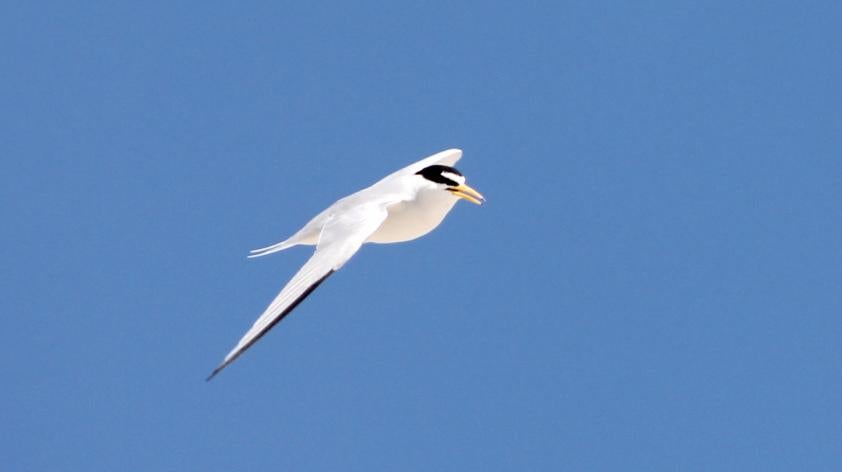
Tracking an Elusive Migratory Bird Year-round
California’s beauty is world-renowned, from its diverse landscapes and rugged topography, to its stunning coastal deserts. But this beauty has a downside - California has the highest population among all states in the US, with millions of additional visitors every year. In the midst of coastal development and land conversion, several species of plants and animals survive on ever-decreasing fragments of degraded habitat, and many now require our international undivided attention and protection to preserve them. These species are integral elements of our beautiful ecosystems.
Among our local species in peril, the California Least Tern (Sternula antillarum browni), is a small migratory seabird, nesting in small colonies along some of our remaining undisturbed sandy beaches and dune habitats along the Pacific coast. While terns spend most of the year at sea, breeding adults return to these beaches and selected inland shore habitats in March or April to lay up to three eggs, raising one or two chicks per breeding season on a diet of small fish.
In addition to natural mortality stemming from environmental factors such as storms (high winds and flooding of nests), disease, and avian and mammalian predation of eggs, chicks and adults, California Least Tern populations have been federally listed as endangered since 1970, with major habitat loss and disturbance as the most significant drivers of their declining reproductive success. Land conversion, pollution, noise, and introduced predators (including cats and dogs), have left few coastal areas where highly camouflaged eggs and chicks are protected from trampling, predation, or parental abandonment. More recently, as forage fish distributions change due to climate change and unusual ecological conditions exacerbated by El Niño events, many fledglings that may otherwise survive the season at safer sites, are now starving instead as parents search for dwindling fish prey, left exposed to predators and the harsh coastal desert elements for longer periods, or succumbing to unpredictable weather conditions.
While our knowledge about the drivers affecting tern populations at their breeding sites is improving, and while banding and monitoring efforts provide invaluable information about the location of some individuals dispersing into nearby sites in Baja California, the wintering distribution of California Least Terns remains mostly unknown, but may include northern South America and sites along the Central America coast. As terns spend two-thirds of the year at sea, knowledge about their wintering distribution can improve our ability to develop conservation strategies with partners locally, nationally and internationally along their migratory route and wintering foraging areas to enhance their survival once they are at sea.
The San Diego Zoo Institute for Conservation Research has been working with partners to monitor and restore California Least Tern populations in collaboration with the US Fish and Wildlife Service, the California Department of Fish and Wildlife, the US Geological Survey and Bird Banding Laboratory, Marine Corps Base Camp Pendleton, Naval Base Coronado, SeaWorld, and other partners and researchers.
As part of our planned upcoming activities, we are working with Ryan Ecological Consulting to seek funds to acquire and deploy newly designed GPS tags (small tracking devices) that are now small enough and lightweight (~1 gram) for California Least Terns. This exciting technology would enable tracking a subset of previously banded birds throughout their non-breeding distribution to uncover the location of their critical non-breeding habitat and migratory route for the first time. For this upcoming activity, everyone is invited to learn about the project, and to directly support this research, through the Experiment platform at https://experiment.com/projects/where-are-endangered-california-least-terns-spending-their-winters as part of the Seabirds Challenge Grant. The Terns and Plovers team based at the San Diego Zoo Institute for Conservation Research leads the project and thanks all of its supporters and partners.













